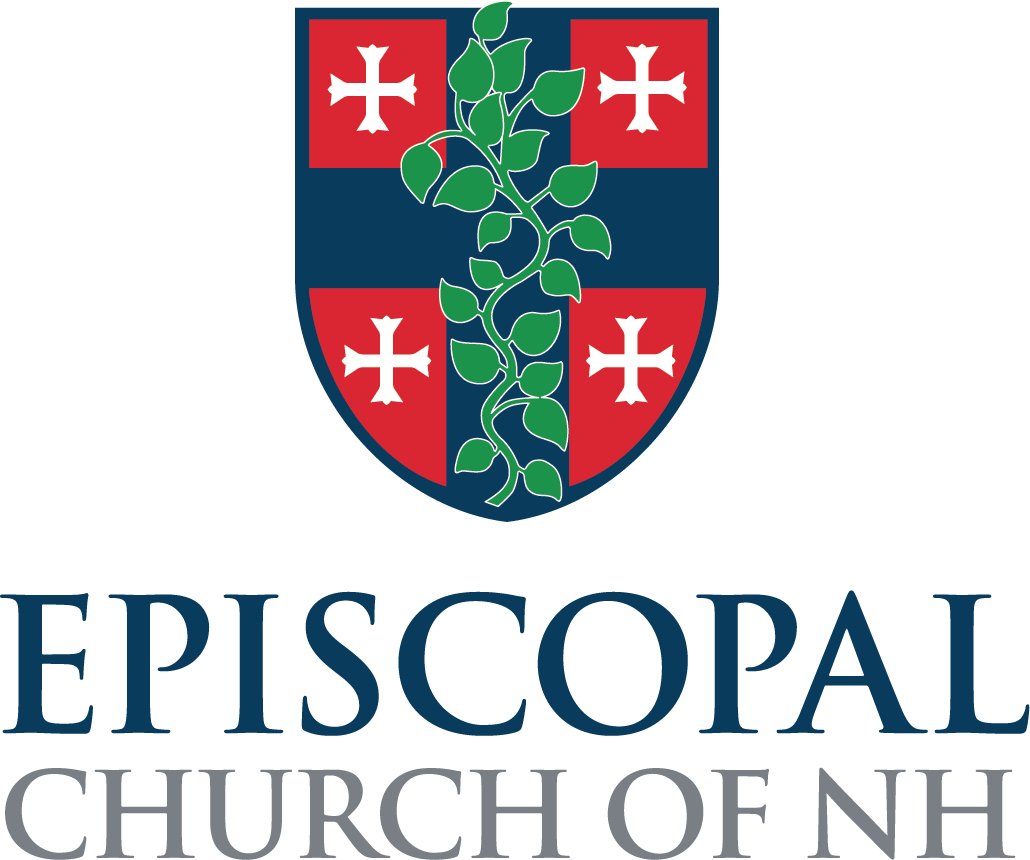“When our hearts are wintry, grieving, or in pain,
Thy touch can call us back to life again,
Fields of our hearts that dead and bare have been:
Love is come again, like wheat that springeth green.”
Wintry hearts. Fields dead and bare. For many of us in New Hampshire, suffering from cabin fever and severe snow-fatigue, the springing green that accompanies the celebration of the Resurrection of Jesus is almost bewildering. What does bare ground even look like? Green leaves? Flowers? Some may even say, “I forget. What does the skin of my arms and legs even look like in the light of day?”
On my desk is a postcard reproduction of the Italian Renaissance artist Andrea del Sarto’s rendering of Jesus at the moment of his returning to life from the dead in the tomb. Del Sarto’s “Pieta” is the only depiction that I have found in the whole world of visual arts of that mysterious moment. Even the writers of the Gospels withdraw from that scene, choosing instead to say simply that the tomb is empty. Del Sarto instead takes us into the tomb before the first witnesses of the Rising arrive to show us a quiet Jesus contemplating both the past days and the future. Our Lord is sitting up, as though for the first time, examining the openings in his hands and feet. The wound in his side is subtly shown, but raw. The soft palette of the fresco almost invite us to hear his first breaths filling again with air, exhales echoing in hewn stone.
It’s a pause just before the world will be turned upside down as he walks out from the tomb, the stone rolled away. Soon he will appear to the women, and then the other disciples, and then the two walking on the road to Emmaus. Soon he will set in motion the movement of Life that we move forward today. But for now, in the tomb as imagined by del Sarto, he appears himself quite possibly overwhelmed and bewildered by what has happened, even if he himself told us it would happen this way.
In many ways this pause is exactly where the Church is today. The Church has been crucified, hasn’t it? It has been pushed to the side of our society and the spheres of influence, status, and privilege. In some places of the world, such as we saw on the shores of Libya, we are watching a new age of Christian martyrdom. We remember Jonathan Daniels in that same light. The days when Church did not have to compete with youth activities and programs are long gone. The days when political parties took serious notice of our witness for peace, mercy, and justice in the name of God are also fast fading. So, the image of Jesus, just waking up to what is real and true after the crucifixion is in a deep sense the image we have of the Church in our day. Not triumphant, not muscular, but no longer asleep either. What a beautifully freeing place to be! We are learning to live again, ready to step outside the stone cave, curious about what comes next.
Of course, Jesus is not only curious about his body. When he appears to the disciples after the Third Day, he starts asking questions: “Whom are you looking for? What are you discussing along the way? Have you tried putting the nets on the other side of the boat? Do you love me?” His questions lead others not merely to believing, but to belonging.
Could it be that to the extent we are not curious about what God is doing in the lives of our neighbors and our world, we remain in the tomb, gaping at our wounds. But marvelously, everywhere the Church is curious is we are waking up to new life, as though sitting up once again with new wind in our lungs. So I hope you will spend this Eastertide with patterning your life on the inquisitiveness of Jesus and ask things like “What’s going on with my neighbors? Who lived here anyway? What are we discussing along the way? Who’s hungry? Who, like our Savior, is wounded? Who are we not noticing? How is God showing up in this place?”
As it was at the first Easter, it is again time for questions such as these to lead us out of our tombs into the new life in Jesus. Then may our wintry hearts warm again to the life that springeth green!
